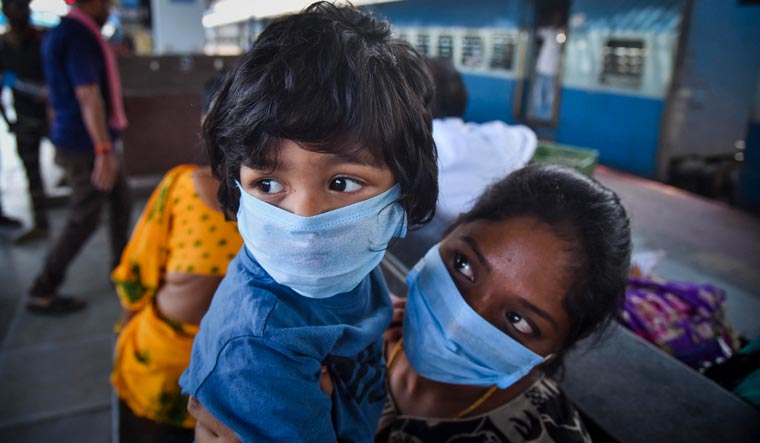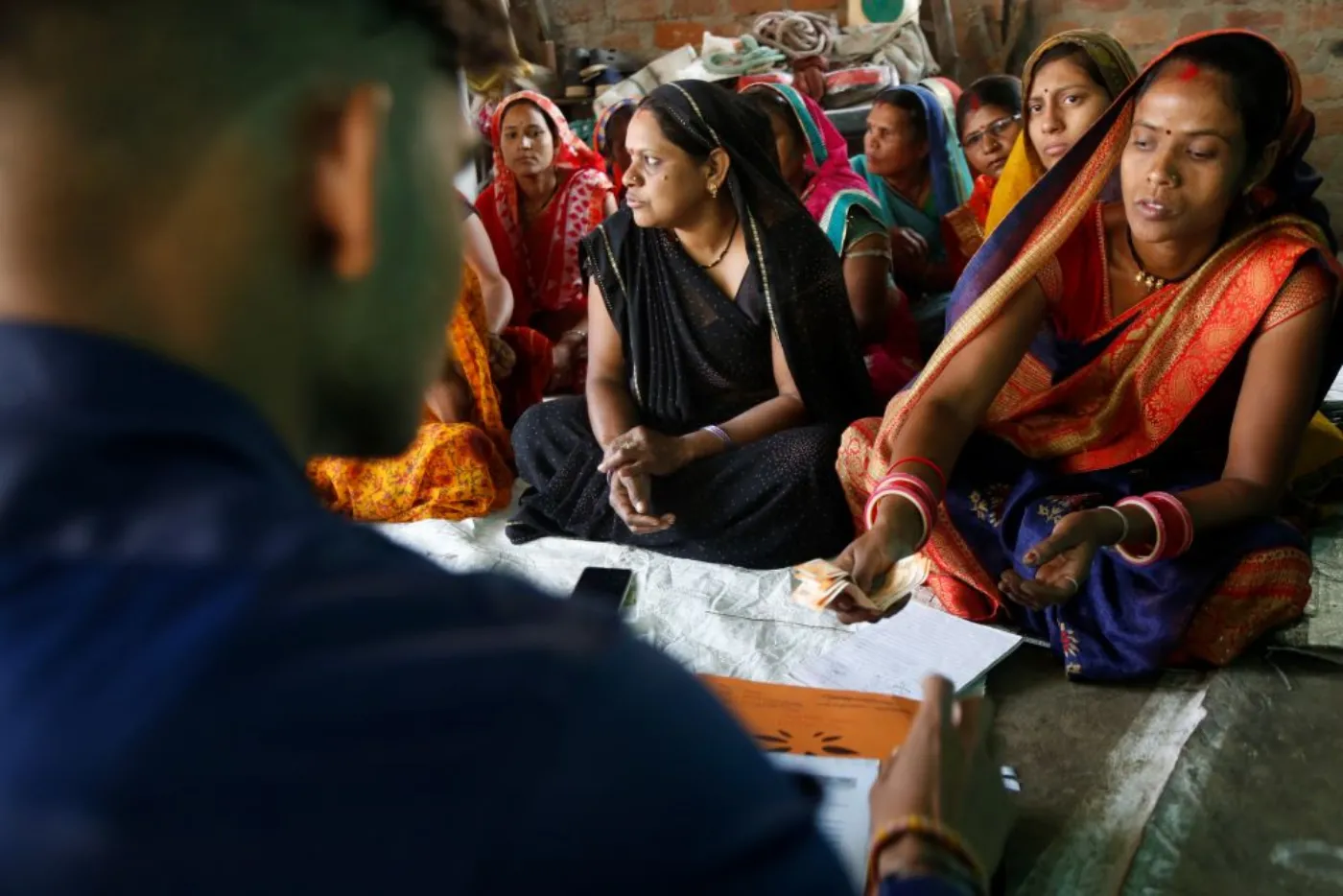Covid-19, lockdown restrictions, schools shut, academic schedules gone awry…and each day bringing a feeling of being socially isolated, mentally adrift, physically chained, Covid-19 has been particularly brutal for children. Not only has it exposed child related vulnerabilities, but even more disheartening is the fact that curated response plans for this group are absent. We have failed to address the concerns of our children even as we speak animatedly about the health and economic/livelihood impacts of the pandemic on adults.
As it is in any kind of conflict and crisis, inequalities of every kind are laid threadbare. And so it is with this pandemic. The poor have been given a raw deal. A huge population of migrant worker stands at the brink of death and destitution. Within this set are women and children, both opening to untold possibilities of exploitation and violence particularly due to the existing social structure and the vulnerability risk of each group. While our immediate and overriding concern has been with physical health, experts have also been warning us of the psychological distress the pandemic has unleashed across subsets of class, gender, region, race, religious affiliation, social orientation etc. Health, education, livelihood, social and economic power have become fantastically intertwined. As we look at the rising death toll across nations and specific responses of the government, one overriding concern is the toll it is taking on children.
The most vulnerable children are of course the ones of migrant workers, refugees and those internally displaced. Without food, water, shelter, staying alive on scattered charitable initiatives, tagging along with their parents as they walk towards their villages, these children of the migrants are fast becoming a cause for concern. Also street children living on their own, and those in conflict prone areas are at increased risk to economic and social vulnerabilities. Together they stare at malnutrition of the deadliest kind, lowered immunity levels and vulnerability to the Coronavirus. Access to healthcare remains abysmally low. The growing economic vulnerability is increasing the risk to child labour and sexual abuse.
The most vulnerable children are of course the children of migrant workers, refugees and those internally displaced. Without food, water, shelter, staying alive on scattered charitable initiatives, tagging along with their parents as they walk towards their villages, these children of the migrants are fast becoming a cause for concern. Also street children living on their own, and those in conflict prone areas are at increased risk to economic and social vulnerabilities.
Kailash Satyarthi, a child rights activist, who started the Bachpan Bachao Andolan and whose work earned him the Nobel Peace Prize in 2015, cannot hide his anguish as he talks of how the pandemic has overturned the efforts to release children from child slavery, abuse and inhuman labour. It is now ironical that activists are now working towards a continuation of children caught in this web. Child labour recruiters in stone quarries, glass bangle factories, factories producing match sticks, apparel, mines and even owners of dhabas and hotels have been requested to continue to engage the children because this seems to be the only way to ensure provisions of food, water and shelter for the children. Plus, the wages could sustain even the adults of the families.
Such is effect of the pandemic. Social discrimination that ought to have been punished under the law has now acquired a philanthropic halo. It is now been seen as the only way to save the children from dying of hunger and destitution. Satyarthi in an interview to a major media house could not hide his anguish at the turn of events. – “I am writing to PM Modi. I have been in an ideological paradox since the death of the girl in Telangana. This time I am requesting him that punitive measures should be lifted for employers of child workers for 3 months. So that these employers release the children for them to return home. It is a controversial suggestion but life is more important.”
Experts believe that lifting of punitive measures against child offenders would have huge implications for future initiatives and legislation against child labour. In fact the poor may harden their belief that more hands could translate to more money. Population control initiatives would get a beating. With the poor’s limited access to education and skill training, the country could well be staring at a generation of unskilled labourers.
While the children of the poor find the circumstances monumental and overwhelming, there is another set from the middle and upper middle segment who are finding the waters choppy despite their relative privileges. WHO estimates that 1.5 million students globally have had their studies severely affected by the pandemic. A sizeable number of Indian students too are struggling to cope with their altered lives. Children are locked indoors and struggling with online classes. Schools, tutorials, hobby classes have shifted to virtual classrooms and most children are finding it very difficult to cope with the new pedagogy. While there are some who await a decision on examinations that were abruptly terminated, there are others who are unsure about their future as almost all competitive exams have been put on hold.
Child labour recruiters in stone quarries, glass bangle factories, factories producing match sticks, apparel, mines and even owners of dhabas and hotels have been requested to continue to engage the children because this seems to be the only way to ensure provisions of food, water and shelter for the children. Plus, the wages could sustain even the adults of the families. Such is effect of the pandemic.
Most children are facing an unreal world. Locked with parents who themselves exhibit psychological stress and neurotic tendencies, plus the effects of crowding, lack of peer group and social/ age appropriate fun activities, the mental distress on them is mounting. Most of them do not understand the ways of the pandemic, much less of its economic impact. The adult world has been quick to get them to online classrooms and re-design education; however, little has been done to curate activities and platforms that could alleviate the psychological distress of children forced to comprehend with sudden and absolute isolation.
Also read: COVID-19 Lockdown: Domestic Workers And A Class-Caste Divide
Abuse – both sexual and physical assaults are on the rise. Children of dysfunctional families are falling victims to physical and psychological violence. Helplines and counselling services are too few and far between and children’s access to complaint cells is severely limited. Several NGOs like Save the Children, Bachpan and others have stepped in to help them, yet their efforts seem scattered. Physical aid could be pouring in and even top line media houses like NDTV are running campaigns to assist the children of the poor. Yet, mental health issues continue to be a cause for concern.
The government’s overall response plans have largely ignored this group. There is still no comprehensive, gender sensitive, age appropriate plan which can mitigate the extent of physical and psychological damage, especially violence, abuse and neglect of children. The need of the hour is to have a social protection plan in place for the children; ensuring continued protection for them in institutions and offering augmented services for those on the streets.
Schools should be empathetic to the distress of students and must provide services of counsellors to help them cope better. Emphasis on learning from the emerging pandemic scenario instead of focussing strictly on the curriculum could boost levels of knowledge and sensitivity in them, especially to their poorer and less privileged counterparts.
Child friendly help line services should open up so that vulnerable ones can reach out for help. The Cyber Crime Cell must work in tandem with telecom companies and technological companies so that children can be safe online. E-education platforms must disburse information on child online safety. Creating content that suggests or encourages sexual abuse or compromises child safety should be stopped.
Also read: Children In COVID-19 Lockdown: Abusive Households And Street Children
The virus may halt its progression someday, but one wonders if spring will ever come back to the lives of our children. Little minds have been undeniably scared even though the scars may not be so apparent. The move by the state governments in picking up its children from Kota, Rajasthan and assuring their return home is laudable as also the move to prepone summer vacations for them so that the health consequences of little bodies and minds can be mitigated is laudable. However, there are other high risk groups whose needs must be quickly addressed else what has been gained in terms of child protection initiatives will surely squander away.
Featured Image Source: India TV
About the author(s)
Saonli Hazra is an educator and runs Words’Worth. She is a government-approved trainer for English and also a freelance writer for Times Publications. She can be reached at saonlihazra@yahoo.com.




